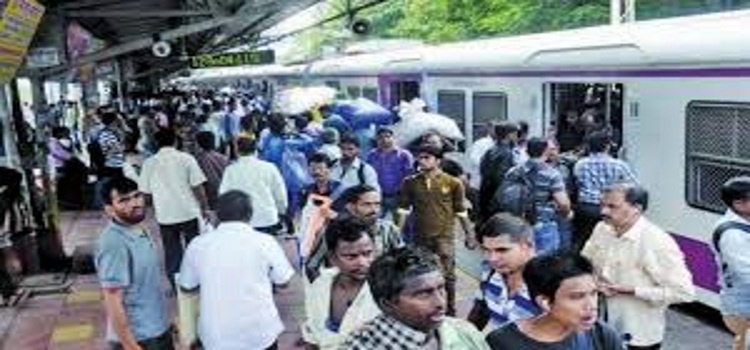
According to railway officials, it takes at least two years on an average to build a foot overbridge (FOB). The reason for the same is said to be the lack of availability of uninterrupted working time as the trains always keep running and that the officials have very little space to manoeuvre while constructing the foot overbridge The railways have to make sure that they don’t cause any damage to the tracks, overhead wires or the posts that fix these wires in place, while drilling into the ground for laying the foundation piers.
Building the Elphinstone FOB will prove difficult due to space crunch — the structure is in close proximity to the platform and tracks — and the fact that Central Railway (CR) is also constructing the Parel Terminus simultaneously.
A railway official said, “The end of the platform at Parel that connects to the foot overbridge is extremely narrow will have to be widened. When the Central Railway will be working on widening that part, we will have to make sure that during the process of digging and fixing the foundation of the bridge, we do not damage the bed of soil on which the tracks are laid.”
For constructing the bridge, the railways will have to bring parts of the foot overbridge together and align them together piece by piece.
During this process, trains cannot be allowed to run on the section where work is going on and finding the time when trains can be halted without causing trouble to commuters is a tough job.
The Western Railway will be rebuilding the Elphinstone Road Bridge, which was opened for the public in 1972.
My query pertains to the recent stampede on Elphinstone foot overbridge in Mumbai where 22 persons died and over 35 were injured. In such a case, can the affected persons file for compensation before the consumer court?
Media reports say that the government has announced some ex-gratia payment to the families of those who died and free treatment to the injured in the tragedy. They can also seek compensation under the Consumer Protection Act., provided they were travelling (or intended to travel) by the local train and were using the bridge as part of their commute. This makes them consumers of the railway service and they can seek compensation for the deficient or negligent service.
The Railways may well argue that the stampede was a result of too many people taking shelter on the bridge on account of heavy rain. However, there is enough evidence that many regulars at this station had warned the authorities about the extremely heavy passenger traffic on the narrow bridge and the possibility of a stampede or any other serious accident and sought intervention. The Railways, however, had made no effort to expand or extend the bridge nor regulate traffic on the structure to prevent such a mishap.
Is there any judgment on an issue like this?
The Elphinestone tragedy reminds me of another horrific disaster involving a railway foot overbridge that came up before the consumer court some years ago, forcing the apex consumer court to remind the Railways that it is its responsibility to maintain in good order, platforms, footpaths and overbridges. Failure to do so constitutes negligence and the Railways has to pay for the consequences, the National Consumer Disputes Redressal Commission had said.
The complaint, in this case, pertained to the collapse of Jogeshwari railway foot overbridge on September 28, 1992. To quote from the order of the apex consumer court, because of the heavy rain, a large number of passengers had taken shelter on the bridge, when a portion of it suddenly gave way, killing and injuring several passengers.
The complainant, Vinaya Vilas Sawant, who was on the bridge with her husband, fell from a height of about 20-25 feet on to the track below, along with the rubble. Multiple fractures and spinal injuries left her with 60 per cent disability, even after two surgeries. Even with the screws and plates used to stabilise her spine, she could walk slowly only with a walker and with the help of an attendant. In fact, when she and her husband were lying unconscious from the fall, they were also robbed of their jewellery and cash.
However, when she filed a complaint before the consumer court, seeking compensation from the Railways, the biggest public sector undertaking argued that she was not a consumer. She was not travelling by train, but only using the bridge and that did not make her a consumer under the Consumer Protection Act. While she said that as an employee of MTNL, she had a monthly pass to travel by train and the pass had been stolen along with all the other belongings when she was lying unconscious, the Railways argued that she did not have a monthly pass!
The district and state consumer courts dismissed her complaint, but the apex consumer court clarified that once a passenger has purchased a ticket to travel by train, he or she is the consumer of all services provided by the Railways in connection with that travel and this included the platform, footpath and overbridges meant for ingress to and egress from the train. In this case, subsequent investigations into the collapse had revealed gross negligence of the Railways — the bridge was in a bad shape, but the Railways had failed to act (Smt Vinaya Vilas Sawant Vs Union of India, RP No 864 of 2006).
The decision paved the way for consumers to haul up the Railways for its negligence with regard to not just rail travel, but the connected facilities too.
